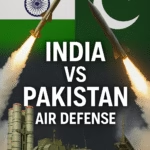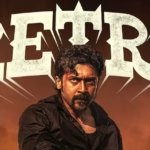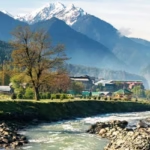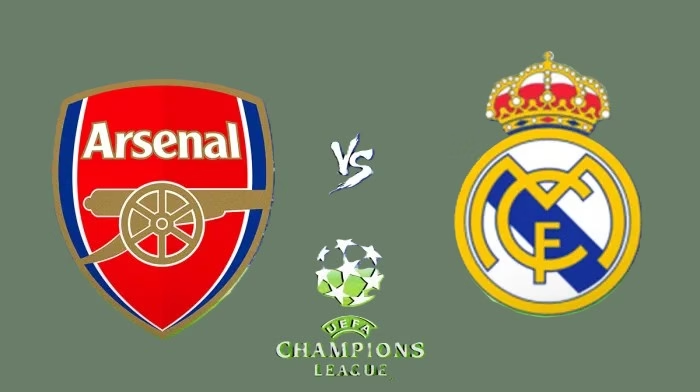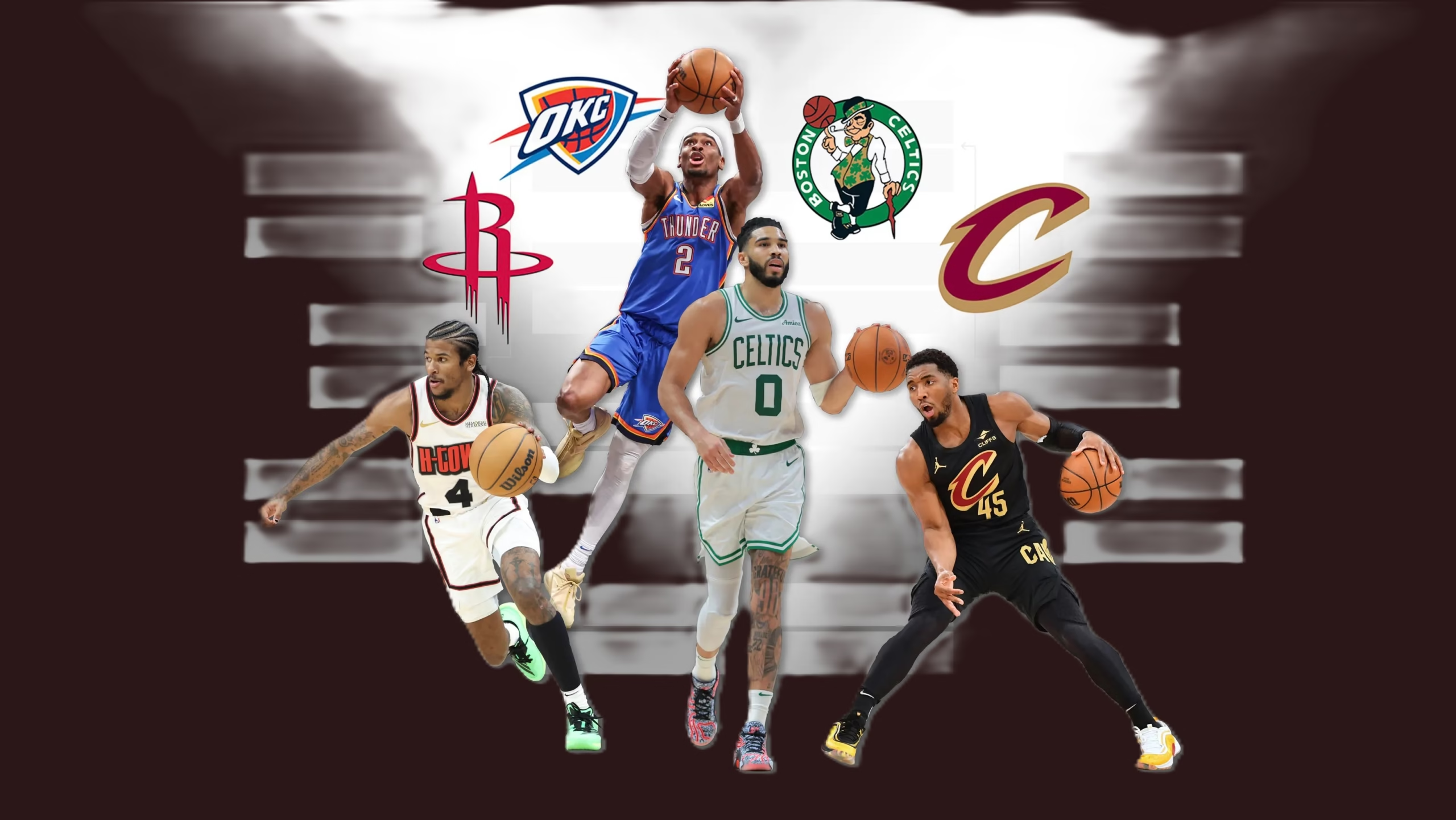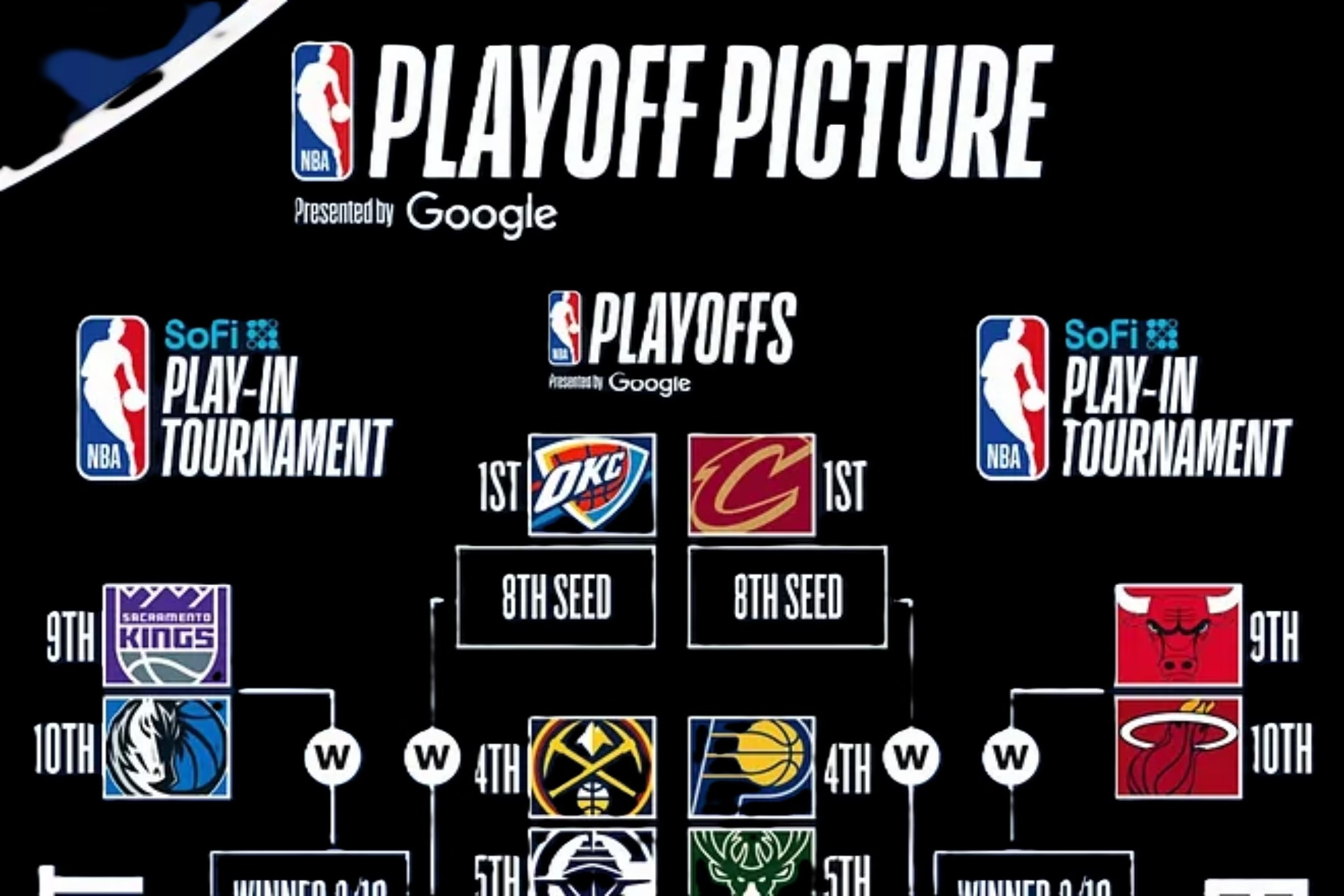The UEFA Champions League quarterfinals have delivered one of the most anticipated fixtures of the 2024/25 season as Arsenal host reigning champions Real Madrid(Arsenal vs Real Madrid) in what promises to be a tactical masterclass between two of Europe’s most prestigious clubs. With the first leg set for April 8, 2025, at the Emirates Stadium and the return leg scheduled for April 16 at the Santiago Bernabéu, football fans worldwide are in for a treat as these giants collide in a rare but potentially classic European encounter. Despite their storied histories, these two powerhouses have met surprisingly rarely on the continental stage, making this quarterfinal tie all the more intriguing.
Head-to-Head History: A Surprisingly Thin Record
For clubs with such rich European pedigrees, Arsenal and Real Madrid have a remarkably sparse head-to-head record. Their only previous competitive meetings came in the 2005/06 Champions League round of 16, where Arsenal made history by becoming the first English team to win at the Bernabéu with a 1-0 victory courtesy of a brilliant Thierry Henry solo goal. The Gunners subsequently held Madrid to a 0-0 draw at Highbury to advance 1-0 on aggregate.
That famous victory remains etched in Arsenal’s European history, with Henry’s goal representing one of the most iconic moments of his illustrious career at the North London club. The French striker showcased his extraordinary talent by dribbling past multiple defenders before finishing from a tight angle.
The only other meeting between these sides came in the 2019 International Champions Cup preseason tournament, which ended in a 2-2 draw. While this friendly match offers little competitive context for the upcoming quarterfinal, it’s another indication of just how rarely these European giants have faced each other.
The Road to the Quarterfinals: Current Form and Season Performance
Arsenal’s Campaign
Arsenal enter this tie having once again established themselves as Premier League title contenders, though they’ve fallen slightly off the pace in the domestic league. This has made the Champions League their primary focus for silverware this season. Mikel Arteta’s side has evolved into one of Europe’s most tactically sophisticated teams, combining positional play with vertical principles.
In Europe, the Gunners have been impressively solid, especially defensively. During the group stage, they remarkably didn’t concede a single open-play goal – testament to their defensive organization under Arteta. Their journey through the knockout stages has showcased their tactical versatility and mental fortitude.
Arsenal’s recent form has been somewhat mixed, with a 1-1 draw at Everton in their most recent Premier League outing, though they received a significant boost with the return of star winger Bukayo Saka from injury. The England international made his first appearance since December and immediately made an impact by scoring against Fulham.
Real Madrid’s Journey
Real Madrid, the 15-time Champions League winners and current holders, approach this tie as slight favorites based on their European pedigree alone. Under Carlo Ancelotti’s guidance, they’ve continued to evolve their style, incorporating new star Kylian Mbappé into their already formidable attacking lineup alongside Vinicius Junior, Rodrygo, and Jude Bellingham.
However, Los Blancos haven’t been entirely convincing in this year’s competition, recording just one clean sheet in their 12 Champions League matches so far. Their defensive vulnerabilities have been exposed at times, though their unparalleled ability to find ways to win in Europe regardless of performance level remains their greatest asset.
Madrid’s domestic form has also seen them fall behind in the La Liga title race, increasing the importance of the Champions League as their path to major silverware this season.
Team News and Injury Concerns
Arsenal’s Selection Dilemmas
Arsenal have been dealt a significant blow with the absence of Brazilian center-back Gabriel, who limped off during their match against Fulham. This creates a major selection headache for Arteta in the heart of defense, with Jakub Kiwior expected to partner William Saliba in central defense.
The loss of Gabriel cannot be understated – he has been a rock at the back for Arsenal this season and his absence disrupts the settled partnership with Saliba that has been the foundation of their impressive defensive record.
There is positive news for Arsenal fans regarding Bukayo Saka, who has returned to action following his injury layoff. The winger featured for 45 minutes against Everton and appears ready to start against Madrid. His dynamic presence on the right flank will be crucial to Arsenal’s attacking plans.
The Gunners are also missing Riccardo Calafiori, which could see Lewis-Skelly continue at left-back, while the midfield trio of Martin Ødegaard, Thomas Partey, and Declan Rice is expected to start.
Real Madrid’s Squad Situation
Real Madrid also face personnel challenges, particularly in defense. Carlo Ancelotti has had to be creative with his backline throughout the season, occasionally deploying players like Federico Valverde and Aurélien Tchouaméni in defensive positions.
There’s speculation that goalkeeper Thibaut Courtois may be rushed back from injury for this crucial tie, highlighting the importance Madrid place on this fixture.
In attack, Madrid have an embarrassment of riches with Mbappé, Vinicius Junior, Rodrygo, and Bellingham all expected to feature. This formidable quartet represents possibly the most dangerous attacking unit in world football, combining pace, skill, creativity, and finishing ability.
Tactical Analysis: Arsenal’s Approach Under Arteta
Mikel Arteta has developed Arsenal into a tactically sophisticated side that blends Pep Guardiola’s positional principles with more direct, vertical approaches when appropriate. Their system is characterized by several key features that will be crucial against Madrid.
The Inverted Full-Back System
A hallmark of Arsenal’s tactical setup is the use of inverted full-backs – a principle Arteta brought from his time as Guardiola’s assistant at Manchester City. This approach has become so embedded in Arsenal’s DNA that it’s now a fundamental aspect of their play.
When the full-back moves inside, they either join the pivot or push one of the midfielders up a line. This creates fluid rotations that can be difficult for opponents to track. Against Real Madrid, this movement will be crucial in creating overloads in central areas.
Width and Central Overloads
Arsenal excel at creating overloads not just in central zones but also on the flanks. When their wingers can’t be released into depth, they pull the defensive line back and receive to feet. This forces opponents to make difficult decisions about how to defend multiple threats simultaneously.
The ball may also be directed to a wide-shifting midfielder, creating yet another angle of attack. The freed-up player’s passing quality becomes crucial, as they look to exploit interline options, which then become potential vertical threats.
Playing on the Edge of the Offside Line
Another principle observed in Arsenal’s recent matches is their ability to play on the edge of the offside line. This approach requires precise timing and movement, but when executed correctly, it can create decisive advantages against even the most disciplined defensive units.
Against Villa, who maintained a disciplined defensive shape similar to what Real Madrid might employ, Arsenal demonstrated how these principles can be applied effectively.
Tactical Analysis: Real Madrid’s Approach Under Ancelotti
Carlo Ancelotti has evolved Real Madrid’s tactical approach while maintaining their traditional reliance on individual brilliance in key moments. Their system can be characterized as a hybrid 4-4-2 that transforms into a fluid 4-2-1-3 in possession.
The Defensive Structure
Out of possession, Madrid adopt a more compact shape than in previous years, with Bellingham and Rodrygo typically tucking infield to form a narrow midfield quartet. They generally defend in a mid-block rather than pressing high, with Vinicius Junior and Mbappé charged with screening passing lanes.
This approach suggests Madrid will likely be content to allow Arsenal some possession while looking to strike on the counter – a strategy that has served them well throughout their European campaigns.
The Diamond Shape in Attack
In possession, Madrid often form a diamond shape on the ball side, composed of the full-back, a number 8, the number 10 (typically Bellingham), and the winger. Meanwhile, the opposite number 6 drops to cover the defense, while Mbappé and the far-side winger are given freedom to find or create angles for through passes.
This angled passing lane is created precisely by stretching the opposing block. In this configuration, being outnumbered almost becomes an asset for Madrid, as it creates space for their elite attackers to exploit.
The Counter-Attack Threat
Despite their ability to control games through possession, Madrid remain at their most lethal when given 45 meters of open space behind an opponent’s back line. This vertical threat, now enhanced by Mbappé’s searing pace, makes them particularly dangerous in transition moments.
Given Arsenal’s likely cautious approach in the first leg, expecting to maintain some control over proceedings at home, Madrid’s counter-attacking threat could prove decisive if the Gunners lose possession in dangerous areas.
Key Player Battles to Watch

Kiwior vs. Mbappé
With Gabriel’s absence, Jakub Kiwior faces the daunting task of containing Kylian Mbappé. The French superstar has scored 33 goals in all competitions during his debut season at Madrid and represents a formidable challenge for Arsenal’s makeshift defense.
Kiwior’s positioning and decision-making will be crucial, as Mbappé thrives on exploiting space behind defenders and using his phenomenal acceleration to devastating effect. The polish defender’s ability to read the game and time his interventions will be severely tested.
Saka vs. Real Madrid’s Left Side
Bukayo Saka’s return from injury provides Arsenal with a significant boost. His combination play with Ødegaard down Arsenal’s right flank has been a key feature of their attacking play in recent seasons. How Real Madrid manage this threat will be crucial to their defensive performance.
Saka’s ability to cut inside onto his stronger left foot or beat his man on the outside makes him particularly difficult to defend against. His battle with Madrid’s left-back and covering midfielder will be one to watch.
Ødegaard vs. Madrid’s Midfield
Martin Ødegaard, Arsenal’s captain and creative hub, will face his former club in what promises to be an emotional occasion for the Norwegian. His ability to find space between the lines and thread passes to Arsenal’s attackers will be crucial to breaking down Madrid’s defensive block.
The battle between Ødegaard and Madrid’s midfield controllers will be fascinating, with both sides likely looking to dominate central areas through different means.
Vinicius Junior vs. Arsenal’s Right Side
Vinicius Junior represents one of Madrid’s most potent attacking threats. His pace, trickery, and improved finishing make him a constant danger, particularly when he can isolate defenders in one-on-one situations.
Arsenal’s right-sided defender will need support to contain Vinicius, potentially requiring Saka to track back and assist defensively, which could limit the Englishman’s attacking influence.
What’s at Stake: Beyond Just a Semifinal Place
For Arsenal: A Statement of Arrival
For Arsenal, this tie represents more than just a path to the semifinals – it’s an opportunity to announce their return to Europe’s elite after years of absence from the latter stages of the Champions League. Under Arteta, they’ve rebuilt methodically, and victory over the reigning champions would be a powerful statement of their progress.
Domestically, Arsenal have established themselves as title contenders once again, but European success has eluded them. Overcoming Real Madrid would validate Arteta’s project and potentially open the door to their first Champions League final since 2006.
For Real Madrid: Continuing the Dynasty
For Real Madrid, Champions League success has become almost an expectation rather than an aspiration. Having claimed 15 titles already, including five in a span of just nine years between 2014 and 2023, they’re seeking to maintain their dynasty.
With Mbappé now added to their galaxy of stars, Madrid will feel this could be the beginning of another period of European dominance. Failure against Arsenal would represent a significant disappointment for a club that measures itself primarily by Champions League success.
First Leg Predictions: What to Expect at the Emirates
The first leg at the Emirates Stadium promises to be a tactical chess match between two managers who understand the importance of controlling key moments in high-stakes games.
Arsenal, playing at home, will likely look to establish control through possession while remaining wary of Madrid’s counter-attacking threat. Arteta will be conscious of not committing too many players forward and leaving spaces for Madrid’s attackers to exploit.
Madrid, for their part, may be content to absorb some pressure before striking through their formidable forward line. Ancelotti’s experience in two-legged European ties is unparalleled, and he’ll understand the importance of remaining in the tie heading back to the Bernabéu.
Several predictions from experts suggest a narrow Arsenal victory in the first leg, with a 2-1 scoreline mentioned as a likely outcome. This would maintain intrigue for the return fixture while giving Arsenal a slender advantage to protect in Madrid.
The Bernabéu Factor: Looking Ahead to the Second Leg
Regardless of the first leg result, the Santiago Bernabéu Stadium will provide an intimidating backdrop for the decisive second leg on April 16. Real Madrid’s home ground has witnessed countless European comebacks and magical nights in the competition.
The ‘Champions League DNA’ that Madrid possess seems to manifest most powerfully at their iconic stadium, where the weight of history and the passionate support can overwhelm even the most composed opponents.
Arsenal will need to approach the second leg with a perfect balance of caution and ambition, regardless of the first leg outcome. Too defensive an approach could invite Madrid pressure, while overcommitting would leave them vulnerable to counter-attacks.
The Historical Significance: David vs. Goliath in European Terms
While both clubs boast illustrious histories, their European achievements stand in stark contrast. Real Madrid’s 15 Champions League titles make them by far the most successful club in the competition’s history. Arsenal, despite their consistent presence in European football, have never won the Champions League, with their sole final appearance ending in defeat to Barcelona in 2006.
This creates an interesting dynamic – Arsenal, representing the Premier League’s wealth and competitive intensity, against Madrid, the traditional European royalty with an almost mystical relationship with the Champions League.
A victory for Arsenal would represent a changing of the guard to some extent, while Madrid triumphing would reinforce their special status in this competition.
Fan Expectations and Atmosphere
The atmosphere at both legs promises to be electric, with fans of both clubs fully aware of the magnitude of this clash. Arsenal’s supporters have been energized by their team’s resurgence under Arteta and will create a cauldron of noise at the Emirates for the first leg.
Madrid’s fanbase, accustomed to success on the European stage, will expect nothing less than progression to the semifinals. The Bernabéu will undoubtedly provide one of the most intimidating environments in world football for the return fixture.
Social media engagement around this fixture has been intense, with fans debating tactical approaches, key matchups, and potential outcomes across various platforms. The rare nature of this matchup has added to the anticipation and excitement.
Where to Watch the Drama Unfold(Arsenal vs Real Madrid)
This quarterfinal tie will be broadcast globally, with major networks across Europe, the Americas, Africa, and Asia securing rights to what promises to be one of the most-watched Champions League ties of the season.
Streaming platforms will also provide comprehensive coverage, with pre-match analysis, live commentary, and post-match reaction ensuring fans have complete access to this heavyweight encounter.
Conclusion: A Tie That Could Define the Season
The Arsenal vs Real Madrid Champions League quarterfinal represents one of the most fascinating matchups of the 2024/25 European season. It pits Arteta’s tactical innovation against Ancelotti’s vast experience, Arsenal’s collective organization against Madrid’s individual brilliance, and English football’s current resurgence against Spain’s traditional European dominance.
While Madrid enter as favorites based on their unparalleled Champions League pedigree, Arsenal have demonstrated throughout this season that they possess the quality and tactical sophistication to compete with Europe’s very best. Their impressive defensive record in the competition gives them a platform from which to challenge even Madrid’s formidable attack.
The outcome of this tie will likely hinge on key individual battles across the pitch and the tactical chess match between the two managers. Can Arsenal’s defensive structure contain Madrid’s attacking stars? Will Saka, Ødegaard, and Martinelli find ways to exploit Madrid’s defensive vulnerabilities? Can Madrid’s experience in high-pressure European situations give them the edge?
Whatever the result, football fans around the world are in for a treat as these two giants of the European game face off in a rare but potentially classic Champions League encounter. The first chapter will be written at the Emirates on April 8, with the dramatic conclusion set for the Bernabéu eight days later.
Read more at worldsinsight.


